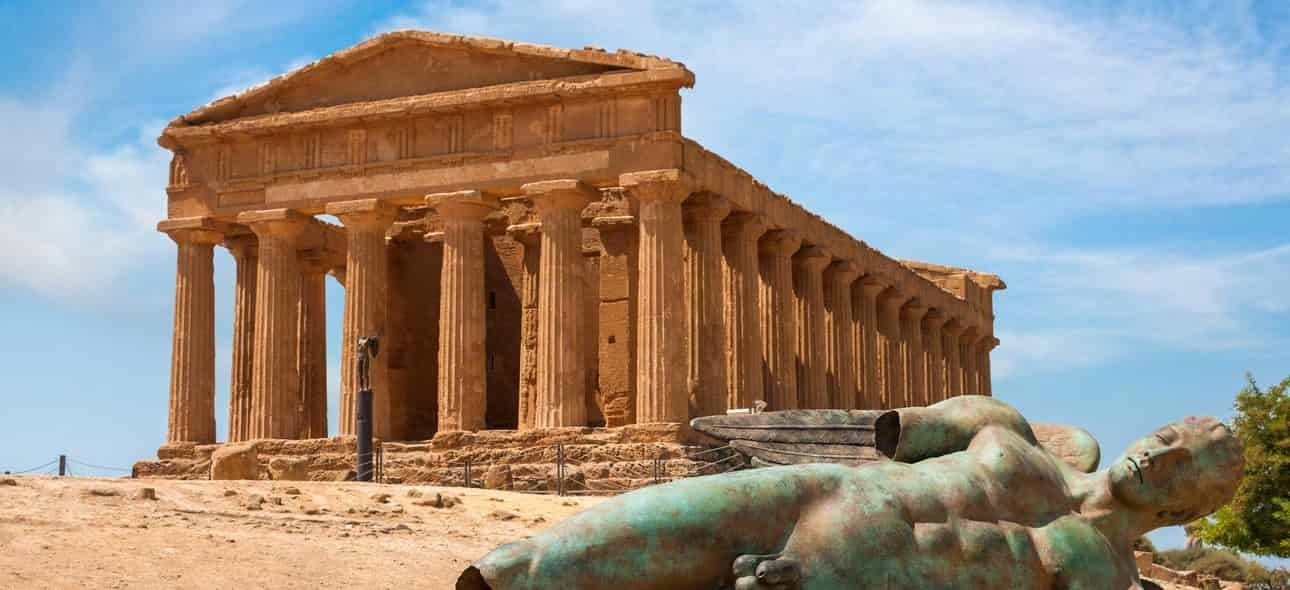The Valley of the Temples in Agrigento
“The most beautiful of the cities of mortals”. Thus Pindar, poet of ancient Greece, described the magnificent city of Agrigento. The Valley of the Temples, a land of millenary history, still pervaded today by a charm unchanged over time, a wonder that UNESCO declared a World Heritage Site in 1997. It is impossible to remain indifferent to an archaeological complex of such rare beauty and characterized by such an extraordinary state of conservation. The Valley of the Temples, from which today’s Agrigento will develop over the centuries, occupied the southernmost edge of an ancient Akragas city. This became, in less than two centuries, one of the most populated cities in the Greek world as well as the nerve center of Hellenic culture in the Mediterranean. To get to know the history of this wonderful city and everything that surrounds it in depth, just book a Valley of the Temples Guided Tour. With a local guide, it will be possible to stroll through the polis, the lower part of the city, and admire the landscape from the wonderful top, the Acropolis, which houses one of the most beautiful temples in the valley: the Temple of Hera Lacinia. And then the Temple of Concordia, which seems not to have suffered the deleterious effects of time, the Temple of Heracles of 510 BC, up to the Temple of Zeus (Jupiter) of which it is possible to recognize the Talamons: the statues 7.5 high meters that supported the top of the temple. Akragas, however, beyond the temples, has the real beating heart within its walls, the Agorà. This was the economic center of the city, the place where the lives of the inhabitants intertwine and a thriving commercial activity develops. A wonder like the Valley of the Temples continues to thrill today. Relive the dream of Magna Graecia through its temples that dominate a timeless charm of the ancient polis. An open-air architecture museum of which many poets sang the praises.
Things to know about Agrigento
Agrigento: Italian town of about 60,000 inhabitants located on a hill not far from the sea. It was the most important Greek city in Sicily which at the height of its splendor had about 300,000 inhabitants, whose remains are still visible in a valley that in 1997 UNESCO declared a World Heritage Site: the Valley of the Temples. But the city is also linked to the playwright Luigi Pirandello, who won the Nobel Prize for literature in 1934. “I have never seen such splendor in my entire life”. So Goethe spoke of Agrigento. Its name changed numerous times, the Romans called it Agrigentum, the Arabs Kerkent and finally the Normans transformed it into Girgenti and it remained so until 1926 when the city took the definitive name of Agrigento. It should be noted that its inhabitants still call themselves even Girgentani. The structure of the city is very reminiscent of a Greek polis, whose historic center is concentrated in the highest part of it. Alongside churches, monasteries, convents and medieval palaces, which overlook every street or small secondary street, buildings of Arab and Norman architecture alternate such as the Cathedral of San Gerlando, one of the main places of worship in the city. Walking around Agrigento means traveling a very long time line, complex yes, but interesting. The alternation of eras, stories, architectural styles and traditions makes what you are looking at even more compelling. Agrigento is a city to be discovered. Now it’s up to you.





